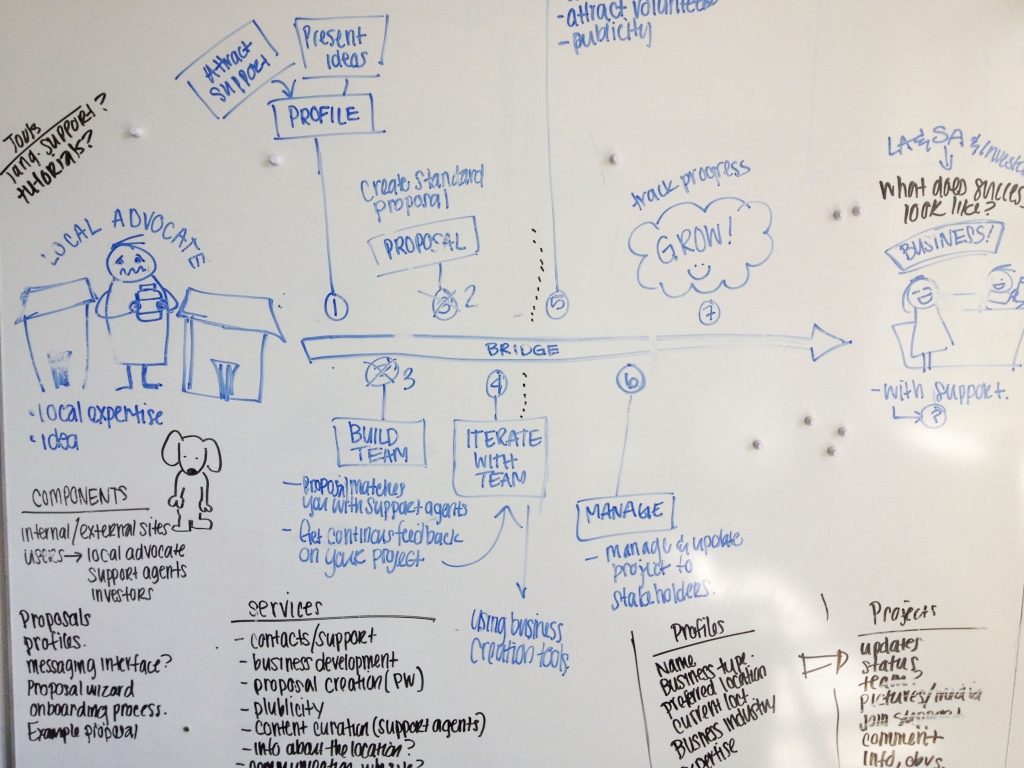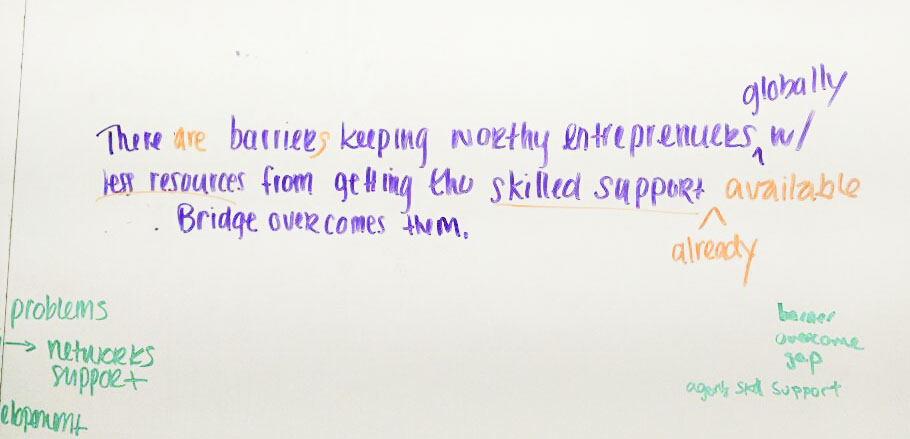Communication strategy as design
Rough as this semester is, I had a really heartening experience today helping a CMU startup with their communication strategy that affirmed several of my beliefs on the impact of design and my process:
- You need to spend time understanding the problem—the whole system—to the best of your abilities.
- Written communication is design and is part of the experience of an audience’s understanding your service.
- The team is not your audience, test your ideas with outsiders.
I am working on their overall design strategy and user experience throughout their serivce system and will be studying the interaction design on one specific chunk of the product throughout the semester. I told them my first step really understanding their product/service. They are so involved and wanted so much to explain the entire system to me that it really took some time to separate all the information they were giving me and think about it as a designer and a user. To think about the core values their service was providing to their intended users and how to communication and refine those areas. I spent a long time meeting with the team listening to their conversation and really challenging different areas of the service until I felt confident I could communicate it with conviction—that means not just understanding in it, but believing in what they were doing.

Notes I took to illustrate my understanding of the process and general notes on what I needed. This mess is how I think about things.
Today we had a collaborative meeting to talking about their pitch and how they can talk about their business so that other people understand it. A challenge they have been facing since they’ve started to a fair number of their audience. I went through exercises with them in order to flush out what they individually thought was the core value of the products, than, of course, asked a bunch of questions myself to make sure that their claims were founded.
Together, we crafted two sentences about what their business did. We hemmed and hawed about language for just a little bit before I was like: “Let’s just see how someone interprets it.” I stepped out, looked around, and found another student to come and read the sentence and tell us what it meant.
Our lovely participant read it and gave us a really thoughtful answer on his interpretation. It was exactly right. The founder (a self-admittedly an emotional guy) teared up a little to hear someone else be able to explain what they did from one sentence.
Now, I’m not saying the sentence is perfect and we’re definitely not done with their whole communication now, but it was this beautiful ah-ha! moment for us. It’s able to capture the essential elements of what they needed and from here we can really fine-tune its message to support this claim.
And it felt so good to have helped him with at least one part of his problem through design. The founder said that it was an incredible to witness that simple process of asking someone else to check your interpretation. And to me it was just necessary.
